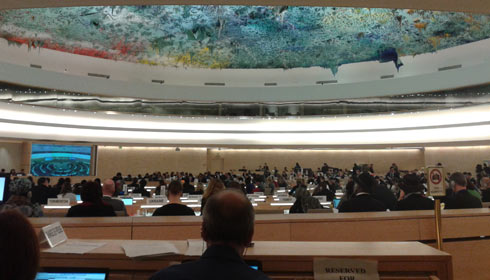uno

As a representative to the United Nations in Geneva, an important concern of mine is that the discourse on human rights of the child is being designed as broad as possible, taking into account social, cultural and economic factors.
The United Nations (UN) is an intergovernmental organization established on 24 October 1945 to promote international co-operation. A replacement for the ineffective League of Nations, the organization was created following the Second World War to prevent another such conflict. At its founding, the UN had 51 member states; there are now 193. The UN Headquarters resides in international territory in New York City, with further main offices in Geneva, Nairobi, and Vienna. The organization is financed by assessed and voluntary contributions from its member states. Its objectives include maintaining international peace and security, promoting human rights, fostering social and economic development, protecting the environment, and providing humanitarian aid in cases of famine, natural disaster, and armed conflict.
The United Nations Office at Geneva (UNOG) is the second-largest of the four major office sites of the United Nations (second to the United Nations Headquarters in New York City). It is located in the Palais des Nations building constructed for the League of Nations between 1929 and 1938 at Geneva in Switzerland, and expanded in the early 1950s and late 1960s.
Besides United Nations administration, it also hosts the offices for a number of programmes and funds such as the United Nations Conference on Trade and Development (UNCTAD), the United Nations Office for the Coordination of Humanitarian Affairs (OCHA) and the United Nations Economic Commission for Europe (ECE).
Link: United Nations Office in Geneva


